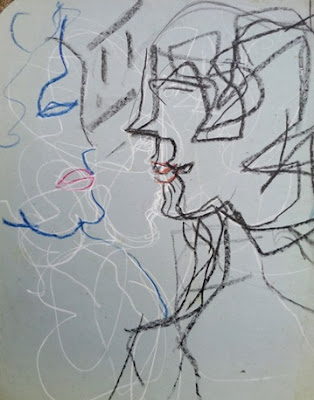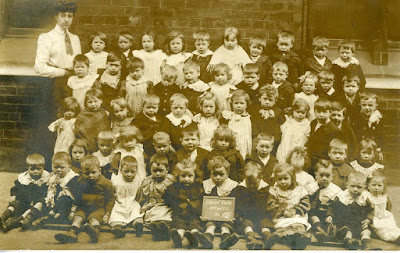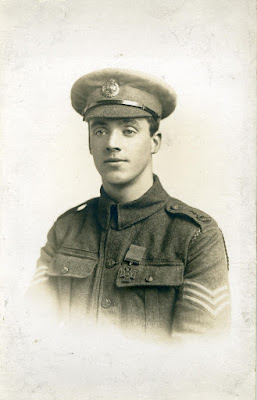Liz Kay continues her series of posts about artist Joash Woodrow
(Catch up with Part 1) |
| Joash Woodrow and Cyril Satorsky - ‘Student Drawing’, 1944 |
Woodrow’s parents were Polish-Jewish immigrants who ran a bookshop and gave their son a lifelong love of culture and progressive politics. With his sights set on an artistic career, Woodrow enrolled at Leeds College of Art in 1942 and won a scholarship to the Royal College of Art. In a class alongside future greats like Frank Auerbach and Peter Blake, Woodrow’s tutor marked him out as a rising star.
Someone who knew Woodrow well during this time was his childhood friend and fellow art student, Cyril Satorsky. Describing Woodrow as ‘extremely shy and ultrasensitive’, Satorsky also highlights Woodrow’s ‘hyper-real’ sense of humour and elaborate practical jokes. On one occasion, Woodrow carved an enormous ‘Easter Island Statue’ at a quarry in Leeds and convinced Satorsky it was an ancient monument. As cash-strapped students, they spent their time debating politics, reading Russian novels and visiting Leeds’ museums.
Woodrow’s earliest drawings include this collaboration with Satorsky, made while both artists were at Leeds College of Art. The drawing was initially torn up, but then given as a memento to their friend, J. Clark. Fortunately, Clark saved the drawing for over 60 years before donating it to the gallery.
The two young artists have adopted a style in which it is difficult to tell their hands apart, and which is quite different from both artists’ mature work. The tight lines and careful shading are in contrast to Woodrow’s more expressive style, while Satorsky has gone on to focus on bright and bold abstract painting..
 |
Joash Woodrow – ‘Nude Female Studies’, 1944 |
Wartime and Inspirations To explore this drawing in context, Satorsky’s recollections give a flavour of the times. The Second World War provides the backdrop, a time when ideas carried great power, laced with a sense of danger.
Horror and absurdity can be felt in Woodrow and Satorsky’s drawing, where one man points a gun at another who has a noose about his neck. The drawing’s violent imagery evokes powerful artistic statements about the brutality of war. The stylised figures and wide angle composition suggest an appreciation of Picasso’s Guernica.
Another inspiration may have been the anti-war ballet ‘The Green Table’, which Woodrow and Satorsky saw in Leeds. The performance by German political exiles Joos Ballet featured a dance of death in which the characters meet with grim fates. Impressed, the two students talked their way backstage to draw the dancers. Jotting the German names in their sketchbooks, the pair left to continue sketching near some anti-aircraft guns in a park, unwittingly leading the nearby military police to mistake them for German spies!
Tensions were running high and art could be seen as a weapon. Satorsky describes how Woodrow ‘loved the combat’ of making art and could ‘lay down a mark like Mohammed Ali’s punch’, using ragged old brushes to stab at his canvases with unexpected precision.
Life Drawing at Leeds Art Gallery
At art school, Woodrow’s approach to life-drawing class also caused controversy. Perhaps feeling stifled by technical exercises, Woodrow would change all the models’ poses in his drawings. This process of re-imagined life-drawing may be what we see in his drawing Nude Female Studies at Leeds Art Gallery, made in 1944, at Leeds College of Art. In this pencil drawing, two figures are rendered sharply, but ghostly figures also merge into abstract mark-making alongside these.Woodrow’s studies were interrupted by national service in 1945, when he was posted in Egypt for three years as a cartographer.
Graduating from the Royal College of Art in 1953, Woodrow worked in London as an accountant, painting only in the evening. During this time, Woodrow suffered with depression, and an argument with a friend brought on a crisis that led to his return to the family home in Leeds. The next post will explore his fruitful relationship with the city he came back to.
By Liz Kay, Volunteer Cataloguer, Leeds Art Gallery.













































